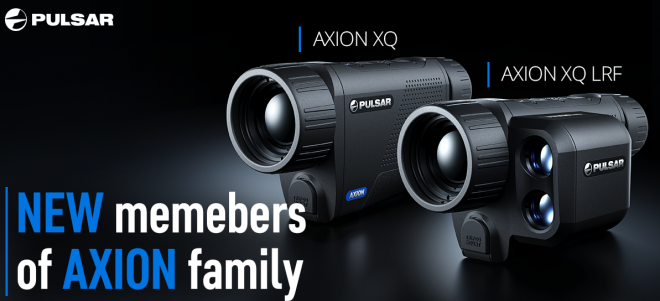Pulsar has just released their brand new Thermal Imaging Spotters in the Axion XQ series – the Axion XQ and Axion XQ LRF (with Laser Range Finder). TFB has the smaller Axion XM30S up for review, and so far the results are very promising. There’s a lot of thermal imaging power in a small, pocket-size package. In comparison to the Axion XM series, new Axion XQ and Axion XQ LRF, utilize a larger 38mm focus lens, a larger 17 μm thermal imaging sensor with 384×288 pixels resolution and <40 mK NETD for that crispier, clearer and more detailed image. They also use larger APS5 batteries.
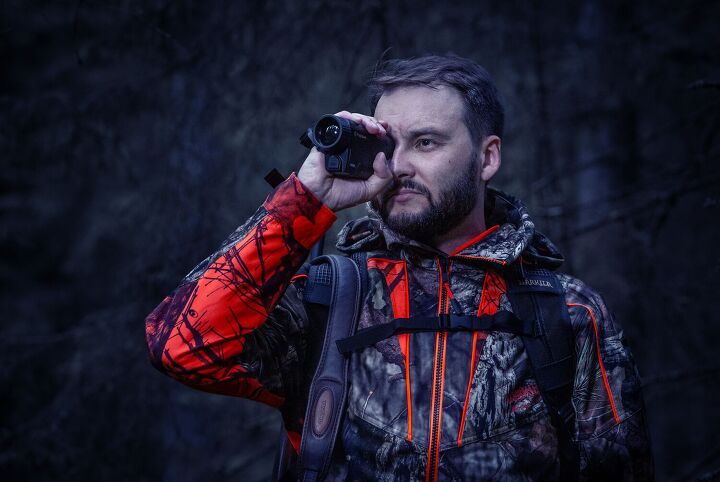
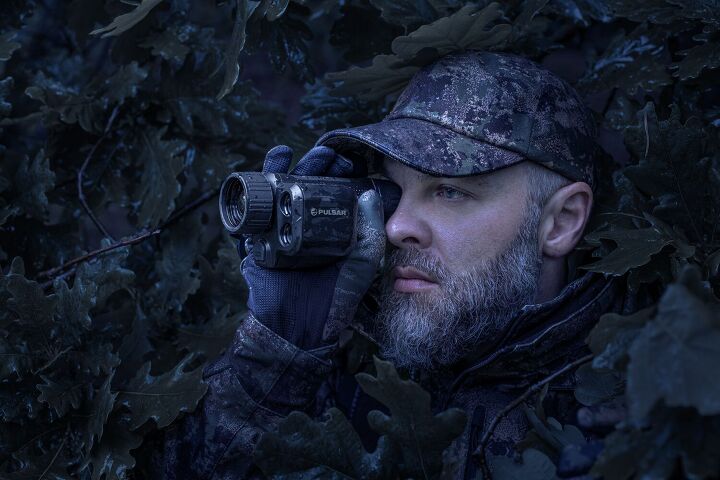
Axion XQ LRF. Laser Range Finder nicely integrated, but there is no video recording or WiFi on this model.
The Press Release reads:
Yukon Advanced Optics, the leading developer and manufacturer of thermal imaging, night vision and day optics for outdoor professionals and hobbyists, has launched Axion XQ38 models with and without laser range finder (LRF) an expansion to thermal imaging spotters. The units have highly sensitive 40mK NETD thermal imaging sensor. This provides Axion XQ users with the perfect detail recognition even when thermal contrast of the surroundings is low – during the rainfall, fog or cold mornings.
The new Axion XQ series has rugged, reliable all-metal, yet lightweight housing. Even though the device is slightly larger than Axion XM series, it perfectly fits into user’s hand. Small weight of the monocular makes it a perfect option for long outdoor trips when light yet capable unit is necessary.
Alongside the new sensor, Pulsar Axion XQ boasts a proprietary Image Detail Boost picture enhancement technology, which increases clarity and detailedness of image, and together with HD AMOLED display ensures better identification of the objects.
38mm lens combined with 384х288 @ 17µm thermal sensor offers not only a long detection range of up to 1350 m., but also a wide field of view of 9.8°.
New Pulsar IPS5 quick-change rechargeable battery provides up to 6 hours of non-stop operation.
Obvious key difference between Axion XQ38 and Axion LRF XQ38, is that the latter includes an integrated laser range finder, capable of accurately measuring distance to objects up to 1000 meters away. Also, Wi-Fi connectivity and video/photo recording were removed for simplified use and focus on key observation functionalities necessary for hunting. Other than that, both devices have same technical specifications:
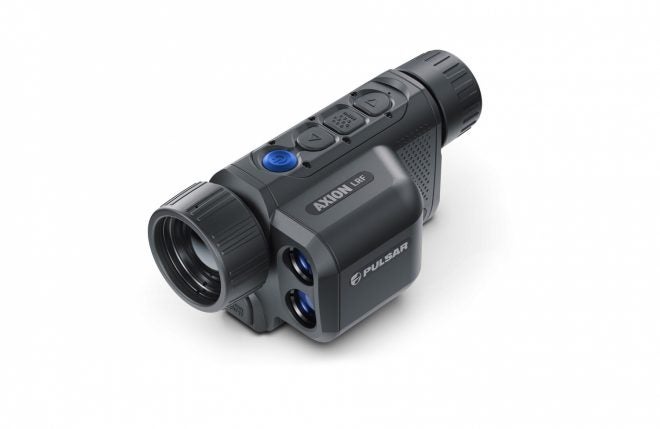
Technical Specifications (for both models):
- Sensor resolution 384х288 @ 17µm
- High sensitivity sensor (NETD < 40 mK)
- 6 Hours of non-stop operation
- Detection range up to 1350 m
- Full color HD AMOLED display
- Highly durable magnesium housing
- Variable, digital zoom 3,5-14x
- Instant start-up
- Picture-in-picture mode, showing display of a magnified image in the main field of view
- IPX7 waterproof-rated for protection from heavy rainfall, snow or other precipitation; it is designed to run flawlessly, even after submersion in up to 1 meter of water for up to 30 minutes
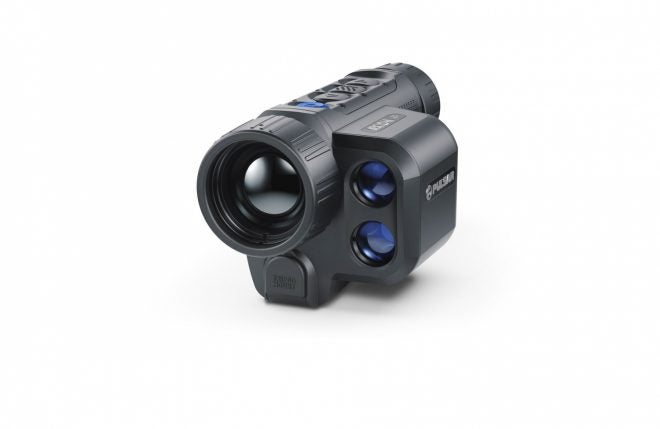
An outline of differences and similarities in the table below:
| Feature | Axion ХQ38 | Axion LRF XQ38 |
| Built-in video recorder | + | – |
| 8 Color palettes | + | + |
| Image Detail Boost function | + | + |
| 3 Calibration modes | + | + |
| 4 Preset observation modes | + | + |
| Display off function | + | + |
| Stadiametric rangefinder | + | – |
| Built-in precise laser rangefinder | – | + |
| «Picture in picture» function | + | + |
| Wi-Fi. Integration with iOS and Android devices | + | – |
| Stream Vision application support | + | – |
| Firmware update | + | – |
What do you think of Pulsar’s new models? Do you use a thermal spotting device or just a thermal imaging sight? Or both?
 Your Privacy Choices
Your Privacy Choices
